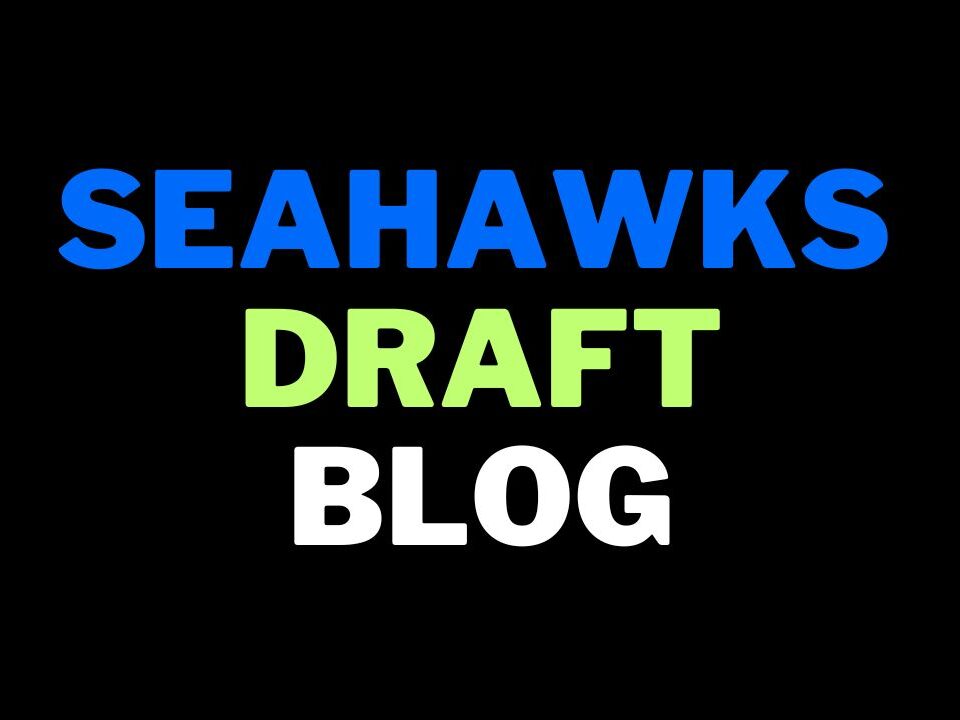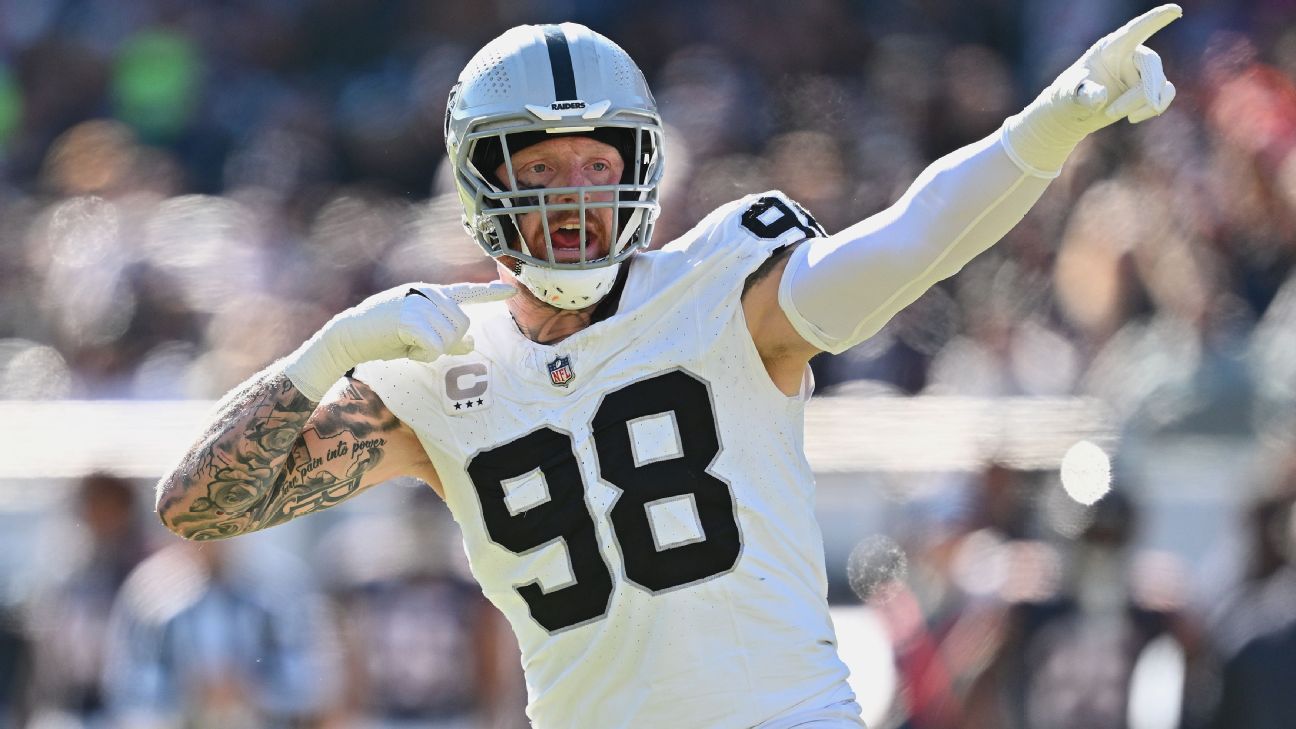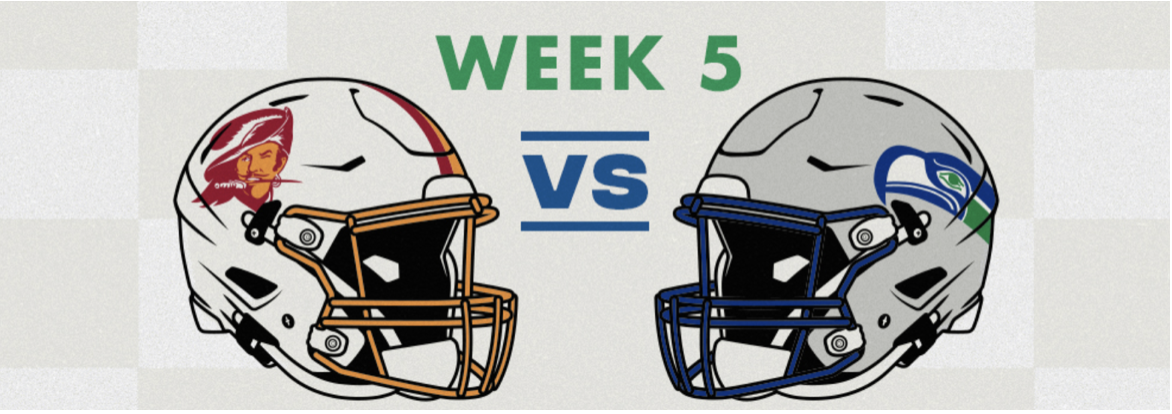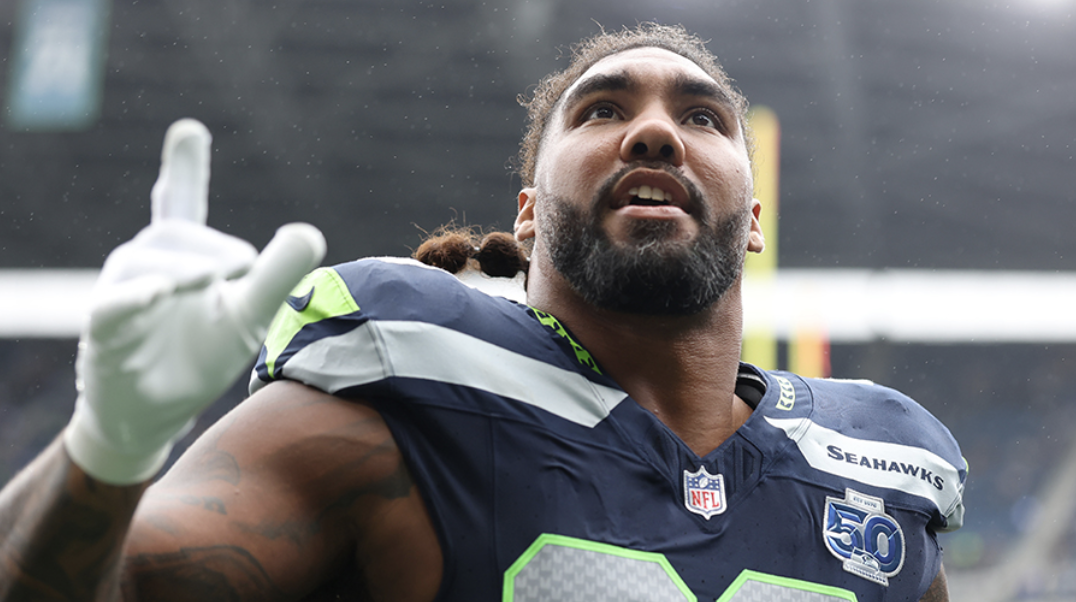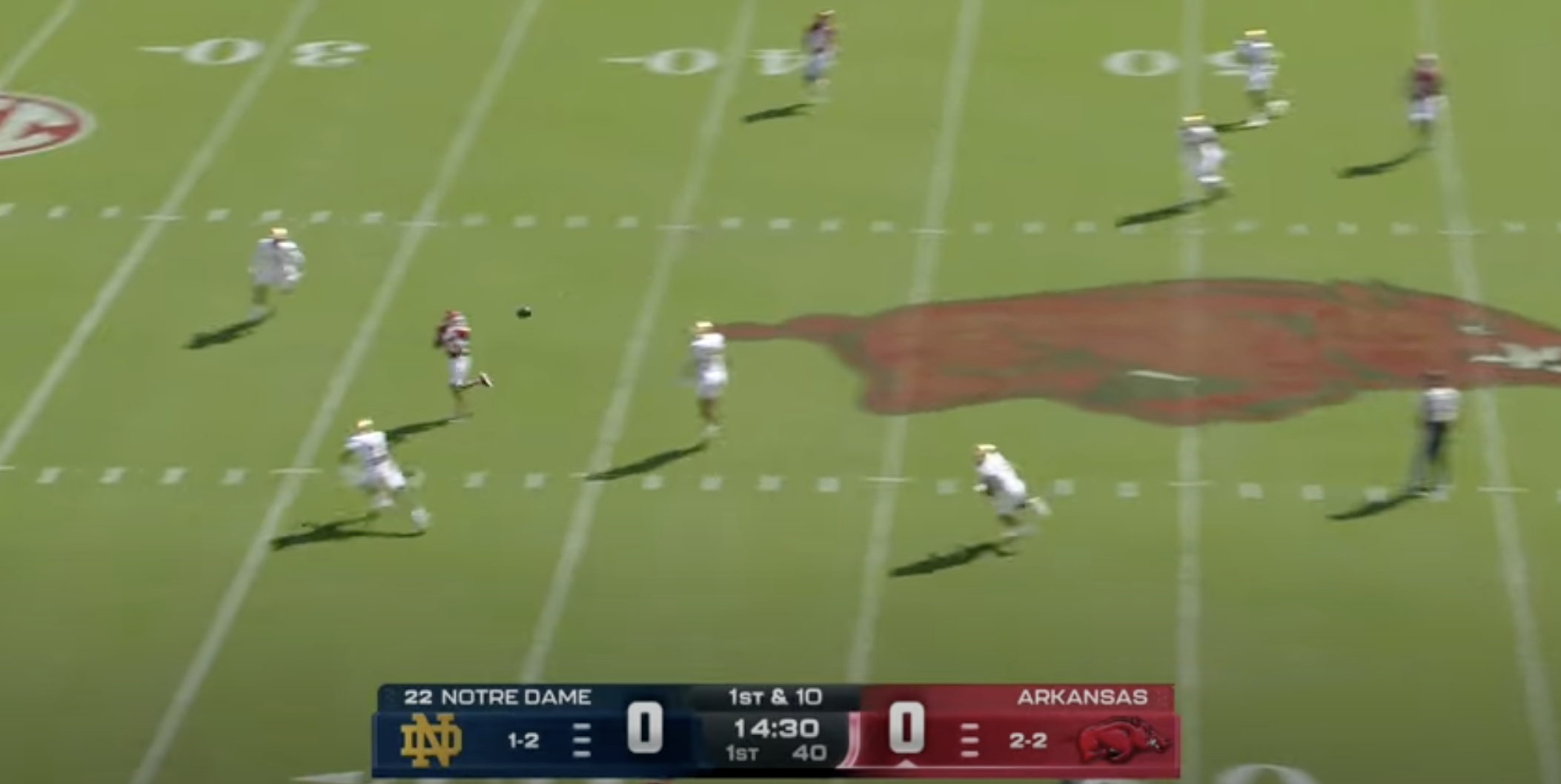It’s been a difficult college football season for scouting so far — and you’re well used to me saying it’s not looking like a great 2026 class at the moment. However, I wanted to focus on some positives today…
Duke lineman Brian Parker is very interesting
Last year Graham Barton, Duke’s left tackle, was drafted 26th overall by Tampa Bay with the intention of kicking inside. Parker feels like he could emulate that achievement and be taken in a similar range.
He is playing very well at right tackle. He’s a high performing, rounded player for the scheme the Seahawks are using. He is PFF’s highest graded zone blocker in college (any position) with a 95.3 grade.
Here’s what you see on tape. Parker moves people off the ball and is extremely physical. He shows good technique with the ability to consistently get his hands inside to control blocks. He’s very mobile and capable of progressing to the second level, then landing on secondary blocks.
He has forceful hands and can jolt defenders off balance with violence. With 9:46 left in Duke’s game on Saturday against California he pulled dove inside and absolutely demolishes the interior defender to the extent you see his head rock back. He’s desperately trying to re-compose himself but the job’s done from Parker. The running back ran through the hole created for a 30-yard gain.
On Duke’s final touchdown with six minutes left they ran behind Parker. He combo-blocked the defensive lineman then reached up to the linebacker:
Look at that jolt on the initial defender and then the quick reactions to land on the linebacker who is completed handled by Parker. The running back gets a ton of space to exploit and darts for a 47-yard score.
There are some issues that show up on tape too. He is susceptible to the occasional inside swim and I’m not sure he has great length or the ability to play inside/out at a high level in the NFL. He looks better in smaller spaces where he can use his hand placement square-on, linking his ability to control with the upper-body to his peppering feet and agility. He did also show at times a propensity to drop a little too deep, ceding ground to the edge rusher.
I think his natural progression is to kick inside. That’s where you’ll really max-out his skill-set. There’s been talk he could end up at center like Barton but I prefer him at guard. He’s 6-5 and 300lbs which isn’t a typical center frame.
I see him as a top-50 talent pre-testing who could effectively be the right-sided equivalent to Grey Zabel if you wanted to go in that direction. He is definitely a name to keep on your radar.
There are several interior linemen that are interesting in this class. I’ve been talking up Penn State’s Vega Ioane — a player I think could warrant going in round one potentially. Miami’s Francis Mauigoa might be best served kicking inside. That could also be the case for Iowa’s Gennings Dunker and some even feel that way about Spencer Fano at Utah. There are options here.
Arvell Reese can be a first round pick
The Ohio State linebacker is getting a lot of buzz online so I decided to check him out. He’s a very impressive talent.
He doesn’t look like a ‘big’ player despite being listed at 6-4 and 243lbs. However, on tape he plays with a thunderous ferocity. He can get under the pads of big offensive linemen, stack them up and disengage. His jolting punch is shocking for a linebacker to displace linemen and throw them off balance. It makes him a real menace defending the run and unlocks a pass-rushing repertoire you don’t often see from a linebacker.
How many players at his position can control an offensive tackle off the edge like this? He’s keeping his entire frame clean to be able to read the play and shed:
Arvell Reese clip that’s just genuinely hilarious
Based on everything he’s put on tape so far in 2025 it’s hard to say he’s not a top 10 player in the class pic.twitter.com/QV2mQSXClr— Big Game Bengal (@BengalYouTube) October 8, 2025
There are not many players who can just throw off linemen the way he can:
LB Arvell Reese is everywhere on the OSU-UT tape.
He’s casually forklifts a 310-pound blocker on this rep and has the speed to flush Arch. Matt Patricia really weaponized him in this game. pic.twitter.com/7HPTik13YS
— Dane Brugler (@dpbrugler) August 30, 2025
However, the thing that makes Reece truly special is he combines this unique power with extreme quickness and burst. I’m becoming increasingly obsessed with range and speed at linebacker after watching Fred Warner live twice in two years and seeing his super-human ability in person to fly to the ball-carrier and run to the sideline, whilst playing with forceful power. Reece has such incredible range and suddenness — that’s why he has a shot to be something special:
Watch the closing speed of #OhioState LB Arvell Reese.
Super impressive player through 3 games. pic.twitter.com/bQARWMPIZZ
— Jordan Reid (@Jordan_Reid) September 14, 2025
When he’s not flying to the ball-carrier or levelling blockers, he’s adept at filling gaps and putting a hat on a hat. He’s very light on his feet and will read/react to plays from his gap. When it’s time to sprint outside he’ll do it — dodging any blocks or stacking/shedding when he needs to. Or if he just has to run right into the running back and fill a hole, he does that too.
His pursuit speed is excellent. He plays with a fantastic motor. His ability to sift through traffic is top notch. His range of contain is superb — stalking opponents and timing the strike consistently well.
And then there’s the pass-rushing. Ohio State has dabbled with using him off the edge a bit and he can do that too. You wonder if he could actually develop into another Abdul Carter type if he sticks around at Ohio State for another year.
If he declares and is part of this 2026 class, which is so light at the top-end, he can be a very high pick.
Ty Simpson continues to shine at Alabama
I’ve been talking about Simpson for a while because he just looks the part. There’s something here which is very interesting. He might not declare as a one-year starter but then again, as an older player, he might see an opportunity — especially if Alabama keeps winning.
He impressed again against Vanderbilt last weekend. His first touchdown is fantastic — showing great movement to escape pressure, reset and then throw to the end-zone:
His second touchdown is a perfectly thrown ball using his eyes to keep the safety inside slightly, before delivering to the left pylon with textbook accuracy and loft.
Second touchdown is a perfectly throw, using his eyes to keep the safety inside slightly and then throwing towards the left pylon with textbook accuracy and loft.
Simpson showed off his arm with a 55-yard shot down the sideline with good placement to Ryan Williams for a big fain in the third quarter. Then, with 7:05 left in the third — he scrambles away from pressure moving to his left. He runs away from the pocket to the right sideline to buy himself time, then quickly stops, re-sets his feet, frames his body to the target and throws perfectly over the middle to the uncovering receiver for a big gain. The momentum of his body is still fading left so he does an excellent job generating velocity and staying accurate:
One of the things I really like about Simpson is his willingness to make plays from the pocket attacking the middle of the field. He isn’t in an offense setting the table for him, making his life easy. He’s going after coverages. He is showing a lot of promise as a third-down converter, both as a passer and with his legs.
On a 3rd and 5 with 10:54 remaining in the game he was pressured so had to leave the pocket. Simpson scrambles to the right sideline and as he is being tackled by a defender he throws back across his body to an uncovering receiver for a first down. You want your quarterback to be able to improv and deliver a little magic from time to time. Here’s a good example of that:
His QBR score since the week-one loss to Florida State is 90.0 exactly. He is playing better than any other quarterback in college at the moment. He is making NFL throws, he’s doing what you want to see a pro-prospect do to project to the next level. Nothing about his completions are high-percentage or cookie-cutter.
He did throw a bit of a lousy interception against Vandy — his first of the season — although it was on fourth down and he probably just executed the call and it wasn’t on. When it’s fourth down, you’re not eating the play because there’s no next down to live for. You might as well put it into the air but he threw into coverage and was picked off.
He does take some sacks trying to extend but you can live with it because when he does break contain or finds that extra space, he’s technically so good at re-setting he can make big things happen.
I don’t know if he’ll be part of the 2026 class but he’s a very interesting prospect and I’d recommend checking him out in the coming weeks.
Final point on Reuben Bain
The Miami defensive end is getting a lot of love online but I feel obliged to push back a little bit here. There’s no doubt he’s playing well and impacting games. However, from a pure next-level projection point of view I do have some reservations.
He is a bigger pass rusher and relies on power a little too much for my liking. There have been some examples on tape where he bends and straightens off the edge but I feel like a very small sample is doing a lot of heavy lifting for what he can do as a player. There’s some stiffness to his game, he is not particularly twitchy and he’s not a loose-hipped athlete. I’d also note that his motor isn’t relentless and while there’s no doubting his jolting power at times, I’m not convinced he’s going to boss around NFL blockers.
One of the consistent mistakes draft media makes are to over-project bigger edge rushers. We see it every year — players in that 270-280lbs range who get hyped up as a first rounders but settle into day two. Nic Scourton is a good example this year. Many were projecting him to go very early and he ended up being the 51st overall pick. AJ Epenesa, Boogie Basham. This is a common trend.
I’m not saying Bain will last well into day two — especially in this class — but I’m not buying the talk of him being a potential #1 overall prospect or even necessarily a player warranting a first round grade. He’s good — but not as good as some are hyping up.
